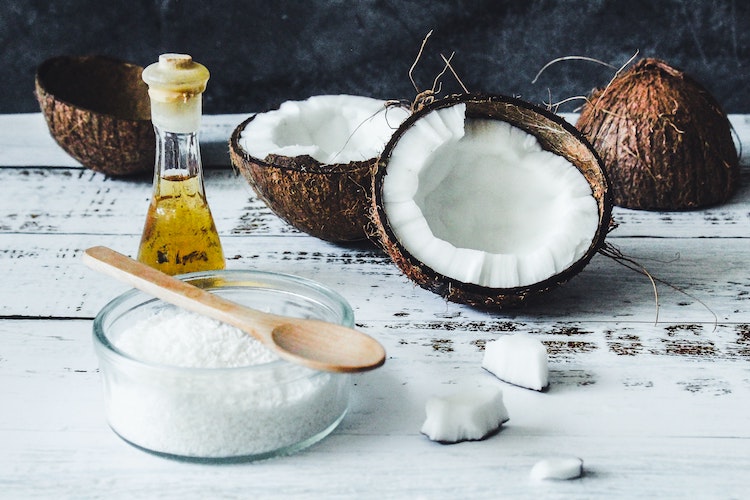Let’s tackle an uncomfortable topic: yeast infections. Contrary to popular belief, yeast infections are common for both women and men. So, if you’re a dude and you clicked on this by accident, you just might want to stick around to find out if using coconut oil for yeast infections is a good option if you ever develop this issue in the future.
What is a Yeast Infection?
A yeast infection is basically yeast overgrowth in the body. What this means is that the infected area had an issue with its delicate balance of beneficial and harmful microbials (bacteria and yeast). When an imbalance occurs, the harmful microbes have outgrown the beneficial microbes. This leaves your immune system vulnerable to sickness, disease, and infection.
There are yeast infections of the skin, mouth, gut, and genitals. For this article, we will be discussing yeast infections—or yeast overgrowth—that affect the genitals.
There are other articles on MoldBlogger that focus on yeast infections of the skin, mouth, and gut. Feel free to use our helpful search bar to locate whatever topics you need more information on.
Symptoms of Yeast Infection in Women:
• vaginal itching
• swelling around the vagina
• burning during urination or sex
• pain during sex
• soreness
• redness
• rash
• clumpy, whitish-yellow discharge (often described as “cottage cheese”)
• an unpleasant bread-like smell
Symptoms of Yeast Infection in Men:
• itching or burning on the tip or foreskin
• swelling of the tip or foreskin
• trouble pulling back the foreskin
• redness
• a moist feeling on the tip
• sore or white patches of skin
• difficulty “performing” during sex
• difficulty controlling the urine stream
• clumpy, whitish-yellow discharge (often described as “cottage cheese”)
• an unpleasant bread-like smell
What Causes a Yeast Infection?
While a yeast infection could be caused by multiple factors at once, it is most commonly caused by a diet overly-rich in sugar and less-than-ideal hygienic practices, which is why many develop yeast infections in the coldest months when they’re inclined to eat more sugary comfort foods or in the hottest months when they sweat more.
Regardless, there are plenty of causes independent of excess sugar consumption and improper hygiene, which are:
• antibiotics—these diminish the amount of Lactobacillus (“good,” fungi-fighting bacteria)
• uncontrolled diabetes—chronic high blood sugar feeds the yeast and causes overgrowth
• weakened immune system—anything that falls under that category (Hashimoto’s Disease, Lyme Disease, HIV, etc.)
• hormone imbalance—near your menstrual cycle, during your pregnancy, or while taking oral contraceptives
• stress—sudden or chronic
• obesity
• the use of steroids
• the use of overly-harsh cleansers—please read the related article: Dangers of Anti-Microbial Soaps
• sex with a yeast-infected partner—this is extremely rare and dependent on whether or not you have other factors at play, such as anything listed above, followed by improper hygiene after intercourse
Psst! Perhaps coconut oil is a key ingredient to proper hygiene after intimacy—let’s find out!
What are the Most Common Treatments for Genital Yeast Infections?
For simple yeast infections, a doctor usually prescribes a 1- to 6-day regimen of anti-fungal cream, ointment, tablet, or suppository.
The most popular doctor-prescribed yeast infection solutions for women are:
• butoconazole (Gynazole)—suppository/topical cream
• clotrimazole (Lotrimin)—topical anti-fungal cream (over the counter)
• fluconazole (Diflucan)—oral
• miconazole (Monistat)—suppository (over the counter)
• terconazole (Terazol)—suppository
The most popular doctor-prescribed yeast infection solutions for men are:
• fluconazole (Diflucan)—oral
• hydrocortisone (Cortizone 10)—topical steroid cream (over the counter)
• miconazole (Monistat)—suppository/topical cream (over the counter)
Since nobody is ever in the mood to go through the hassle of a doctor’s visit, most will take matters into their own hands and purchase Monistat at their local drug store. The problem with many of the options that you can buy over the counter is that—and many women can attest to this—the 6-day products may not work and the 1- to 3-day products can be quite pricey (and still not work).
For optimal success alongside an anti-fungal suppository or cream, you might want to consider a more holistic approach to overcoming a yeast infection. What this means is that you incorporate an anti-fungal diet along with an over-the-counter solution—or coconut oil—to help the suppository, cream, or oil work more effectively.
What is an Anti-Fungal Diet?
Anti-fungal diets are probably the most popular topics on MoldBlogger, so feel free to use our helpful search bar again, or check out these articles to get started:
Anti-Fungal Diet to Help Cure a Yeast Infection
How to Treat Candida Overgrowth Naturally in Six Steps
Foods to Eat When You Have Mold or Yeast in Your Body
What Exactly is Coconut Oil?
Coconut oil is a fatty oil that comes from the white pulp of the coconut. It is well-known for its anti-bacterial and anti-fungal properties. While it has many other benefits, we’re going to focus on its ability to rid the body of fungal overgrowth.
How Effective is Coconut Oil as Remedy for Yeast Infections?
Recent research reveals that coconut oil just might outperform its prescription and over-the-counter competitors:
A 2007 lab study—A range of fungal species were effectively destroyed by the properties within coconut oil. Candida albicans (yeast), especially, was more susceptible to concentrated coconut oil than fluconazole. In fact, it took far less coconut oil (1:4) than fluconazole (1:2) to destroy the yeast. It was then concluded that “coconut oil should be used in the treatment of fungal infections in view of emerging drug-resistant Candida species.” (See: “In Vitro Antimicrobial Properties of Coconut Oil on Candida Species in Ibadan, Nigeria.”)
A 2014 lab/case study—Canines suffering from dermatitis (fungal skin infection) were give two different treatments. Some were treated with various essential oils with coconut oil as the base carrier. Others were treated with a prescription topical ointment. No adverse effects were observed in either group, but all were cured within a short timeframe (less than a month). Nearly 200 days later, the canines were checked to see if the results were lasting. None of canines that received a treatment of essential oils and coconut oil were still suffering from dermatitis, but a small percentage of the canines that were treated with the prescription topical ointment were. (See: “Clinical and Mycological Evaluation of An Herbal Antifungal Formulation in Canine Malassezia Dermatitis.”)
A 2015 lab study—Yeast-infected mice were observed to experience “a 10-fold drop in [Candida albicans] colonization [when] fed coconut oil.” (See: “Manipulation of Host Diet to Reduce Gastrointestinal Colonization by the Opportunistic Pathogen Candida Albicans.”)
How to Use Coconut Oil as a Remedy for Yeast Infections
For women, genital application of the coconut oil will be the most difficult part, which is why most products for female yeast infections include a suppository with an applicator (much like a tampon applicator). It is possible to take a tablespoon-sized chunk of coconut oil and maneuver it in place with your fingers, but another option is to heavily coat a tampon with coconut oil and insert it as you would during a period. Because the lining of the vaginal walls may already be inflamed, I do not recommend the tampon method as this could cause irritable scraping. Instead, if you have plastic tampon applicators, consider ejecting the tampon itself and filling the applicator with coconut oil and using the applicator as you would with a regular tampon. (One thing women need to remember is that coconut oil melts easily and is extremely messy, so be sure to place a liner in your underwear.)
For men, genital application of coconut oil is extremely effortless. Simply take a quarter-sized amount of coconut oil and apply it to the glans. Be sure to pull back the prepuce and be mindful to press the oil into the meatus. Now go have fun looking up those terms!
Aside from topical and suppository applications, it is also recommended that both men and women take coconut oil orally. This is as simple as using coconut oil for cooking and baking, as well as perhaps taking in a small spoonful once or twice a day.
Conclusion
MoldBlogger is not a substitute for your doctor’s advice. All we can do is offer the reader evidence of coconut oil’s anti-fungal effect. In fact, we’re not the only site enthusiastic about the benefits of coconut oil. Please check out Healthline’s article, titled “Can You Use Coconut Oil to Treat a Yeast Infection,” and Medical News Today’s article, titled “Is Coconut Oil a Good Remedy for Yeast Infection?”
Remember, if you choose to use coconut oil as a remedy for a yeast infection, the choice is entirely yours. But, if you do, we’d love to read all about your experience in the comment section below. Your testimony could be the answer someone has been searching for!
For more information regarding mold, mold prevention, and mold solutions, please check out the rest of MoldBlogger.com.
Article by Amanda Demsky from the MoldBlogger team.



1 comment
Thankyou for sharing your opinion